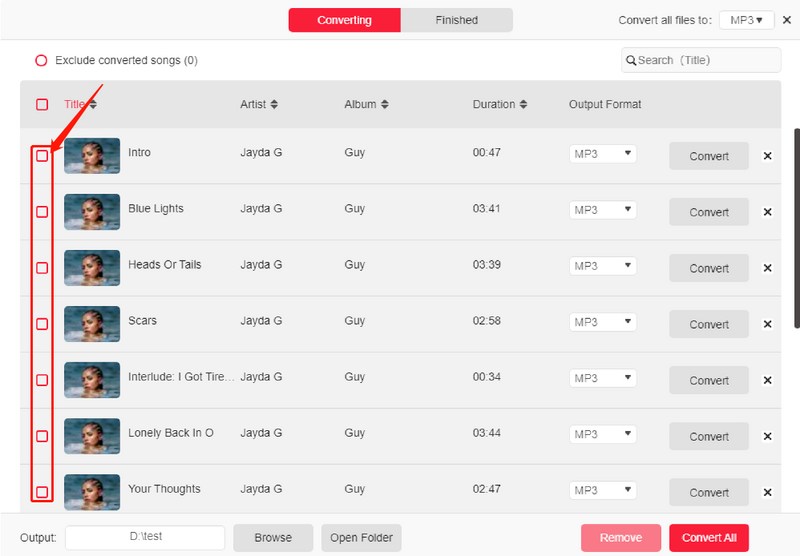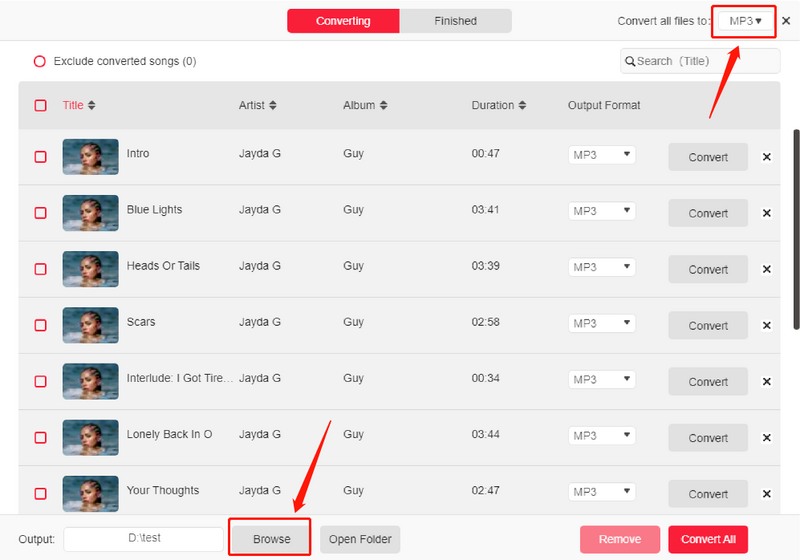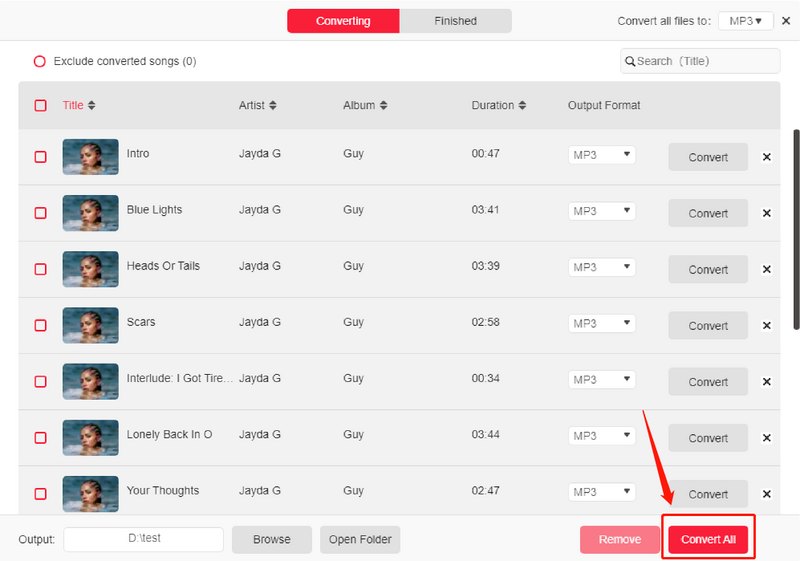Apple Lossless vs Flac 2025 - What Is the Difference
Some audiophiles are very explicit with their audio files. Even the slightest difference in audio quality will tick them off. Recently, one of the most controversial discussions was about the comparison of Apple Lossless vs FLAC, that is AlAC vs FLAC. There is no need to be concerned. In today's article, we'll show you how to tell which of FLAC vs Apple Lossless is the better option for you.
This guide will show you the differences and even similarities between FLAC vs Apple Lossless, and which is better between the two. Let’s start by differentiating these two terms.
Article Content Part 1. What Is Apple Lossless And FLACPart 2. Apple Lossless vs FLAC - Differences And Commons Part 3. Which is Better FLAC or Apple Lossless? Part 4. Bonus: How to Keep Apple Music Forever for Offline Listening Part 5. Summary
Part 1. What Is Apple Lossless And FLAC
Apple Lossless (ALAC)
Apple Lossless is a proprietary audio codec developed by Apple Inc. It is a type of lossless compression, meaning that it compresses audio data without losing any of the original audio quality. When you compress audio files using ALAC, the resulting files are smaller in size than the original uncompressed audio, but the compression is "lossless," meaning that the audio quality is fully preserved.
Key features of Apple Lossless include:
- Lossless Compression: ALAC compresses audio files without any loss of audio quality, making it a popular choice for those who want to reduce file sizes without sacrificing sound fidelity.
- Apple Ecosystem Compatibility: Apple Lossless is well-integrated into the Apple ecosystem. It is supported by iTunes, Apple Music, and iOS devices, making it easy for Apple users to work with.
- Wide Device Compatibility: While ALAC is developed by Apple, it has been made available as an open standard, and many third-party devices and software applications support it.
FLAC (Free Lossless Audio Codec)
FLAC is a free and open-source lossless audio codec developed by the Xiph.Org Foundation. Similar to Apple Lossless, FLAC is designed to compress audio files without any loss of quality. It's a popular choice among audiophiles and music enthusiasts who want to preserve the full integrity of their audio files.
Key features of FLAC include:
- Lossless Compression: FLAC achieves compression without any loss of audio quality. The original audio data can be perfectly reconstructed from the compressed FLAC file.
- Open Standard: FLAC is an open standard and is free to use. It is widely supported across various platforms, devices, and software applications.
- Wide Compatibility: FLAC is not exclusive to any particular ecosystem and is compatible with a broad range of devices and platforms, including Windows, macOS, Linux, and many audio playback software.
- Metadata Support: FLAC supports embedding metadata (such as album art, artist information, and track details) within the file, providing a comprehensive solution for organizing and cataloging audio collections.
In summary, both Apple Lossless vs FLAC are lossless audio codecs that offer high-quality compression. The choice between them may depend on factors such as your preferred ecosystem (Apple or non-Apple), device compatibility, and personal preferences.
Part 2. Apple Lossless vs FLAC - Differences And Commons
Both Apple Lossless vs FLAC are lossless audio compression formats designed to preserve the original audio quality while reducing file size. Here are some key differences between the two:
Apple Lossless vs FLAC:Development and Licensing
ALAC: Apple Lossless is a proprietary codec developed by Apple Inc. It is part of the Apple ecosystem and is natively supported in Apple devices and software.
FLAC: FLAC is an open-source and free codec developed by the Xiph.Org Foundation. It is an open standard and is widely supported across various platforms and devices.
Apple Lossless vs FLAC:Compatibility
ALAC: Apple Lossless is well-integrated into the Apple ecosystem. It is supported by iTunes, Apple Music, iOS devices, and other Apple products. However, its compatibility with non-Apple devices may be more limited.
FLAC: FLAC is a more universally compatible format. It is supported by a wide range of devices, operating systems, and audio playback software, including many non-Apple platforms.
Apple Lossless vs FLAC: Metadata Support
ALAC: ALAC supports embedding metadata within the audio file, allowing for the inclusion of information such as album art, artist details, and track information.
FLAC: FLAC also supports metadata embedding, providing comprehensive support for organizing and cataloging audio collections.
Apple Lossless vs FLAC: Ecosystem Integration
ALAC: If you are heavily invested in the Apple ecosystem, using ALAC may offer a more seamless experience, especially when working with Apple software and devices.
FLAC: FLAC is a more versatile choice for users who may have a mix of Apple and non-Apple devices or who prefer a format with broader compatibility.
Apple Lossless vs FLAC: Lossless Compression Efficiency
Both ALAC and FLAC are capable of achieving similar levels of lossless compression efficiency, meaning that the resulting compressed files retain the full quality of the original audio.
Apple Lossless vs FLAC: Compression and File Sizes
Both ALAC and FLAC generally achieve similar compression ratios, resulting in similar file sizes for the same original audio content.
Apple Lossless vs FLAC: Popularity and Usage
ALAC: More commonly used within the Apple ecosystem, especially for users who want to keep their libraries within the Apple environment.
FLAC: Widely adopted in the broader audio community and among users who prioritize compatibility with a variety of platforms and devices.
In summary, the choice between ALAC vs FLAC often comes down to the ecosystem in which you primarily operate. If you are within the Apple ecosystem, ALAC may be more convenient. If you want broader compatibility across various platforms, devices, and software, FLAC is a versatile and widely-supported option.

Part 3. Which is Better FLAC or Apple Lossless?
Now that we’ve known the definition and features of these formats, you might now wonder which among FLAC vs. ALAC is the better format to utilize for your tracks?
All of the music in these "FLACs vs. ALACs" are compressed audio music. When a file is released, it is usually between 100 and 200 megabytes in size, making storage on a media device nearly impossible. That is why compression reduced the size of the original data, making it easier to store and send.
The benefit of lossless compression of Apple lossless vs FLAC is that it reduces file size without sacrificing quality. The term "lossless" refers to the fact that no audio data is lost. Neither file types hold up little space on hard disks or personal storage systems.
They compress the audio files into tiny formats without sacrificing quality, and they can carry high HD music that can be played on any audio speaker unit. Depending on your needs, you can use FLAC or Apple lossless. The ALAC file format is the best choice if you’re a supporter of Apple services and listen to music on your iPhone or iTunes platforms.
FLAC audio files may be more suitable for you if you use a PC, and there is already a program on your computer that can play these files. But whether among FLAC vs ALAC, your choice depends on the usability and efficiency of the formats for you.
In other words, both Apple lossless and FLAC are excellent in terms of quality. They only differ in terms of the supported program, size, and utility. Apple users typically prefer Apple lossless vs FLAC because iTunes supports it, allowing them to save more space.
Because FLAC isn't supported by iTunes, ALAC is a better option. Also, unlike FLAC, which is complicated, Apple lossless is much easier to use.
Part 4. Bonus: How to Keep Apple Music Forever for Offline Listening
A lot of people have become an audiophile or someone who loves music. For these reasons, varieties of music streaming services have emerged in the market over the years. Making us confused about which among them is more effective and works best to use.
But, while you're debating the best streaming service or the Apple lossless vs FLAC file format for your music, keep this in mind. Did you know you can save your tracks for offline listening indefinitely? Yes, you are correct.
TunesFun Apple Music Converter can save your files indefinitely and allow you to listen to them offline! It can convert tracks to various file formats, such as FLAC or ALAC, quickly and reliably. Because it removes file protection, similar to how Apple Music songs are protected by DRM.
The quality of the music files is preserved after conversion. You can also listen to your music when you're not connected to the internet. Offline listening has the advantage of allowing you to listen to the tracks whenever and wherever you want.
You also won't have to worry about paying for subscriptions or songs not playing due to a slow internet connection.
Another thing about this converter is that you can use this for free! Yes, you can make the conversion on this app without paying any single penny. From that, you can keep your favorite music tracks forever as well as can share them with any devices and people.
If you’re worried about the complexity of TunesFun Apple Music Converter, don’t be. With just three easy steps, you can have your songs forever. To begin, you need to have the application by installing it on your device.
Step 1. After you've downloaded the application, double-click it to access the system. Then, go to your Apple Music library and select the tracks or albums you want to keep.

Step 2. Second, look for an output audio format (FLAC to ALAC, ALAC to ALAC, WAV, MP3) in the tracks output folder. Also Read: How to Convert Apple Music to MP3 [4 Helpful Ways 2024]

Step 3. After you've completed the first and second steps, tap the "convert" option. As a result, the conversion process can now begin in the application.

You can now inspect the files in the output folder you chose. Once you've found the files, select and copy all of the file tracks. Then, go to your device's music folder and copy all of them by right-clicking on the mouse and selecting paste.
If you’re done, you may now keep your favorite music tracks forever and play them offline whenever you can. Furthermore, if you want to change the file format of your song from FLAC to ALAC, you can do the process all over again.
Part 5. Summary
Whether you are an Apple user or not, that prefers FLAC to ALAC or vice versa. Both audio formats work best for our music tracks. In terms of their difference? We’ll depend on your likeness in iTunes, because if you like iTunes then Apple Lossless (ALAC) is for you.
However, with TunesFun Apple Music Converter you don’t have to be worried about choosing between Apple lossless vs FLAC. Because you can convert them anytime with TunesFun Apple Music Converter.
Also, if you want to keep your tracks so you can stream it anytime, anywhere, and whatever devices you have. Then, install TunesFun Apple Music Converter to your device now.
Leave a comment